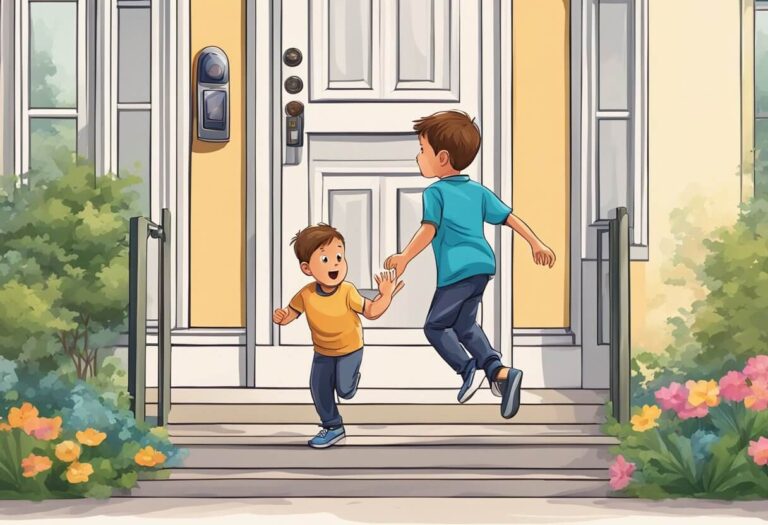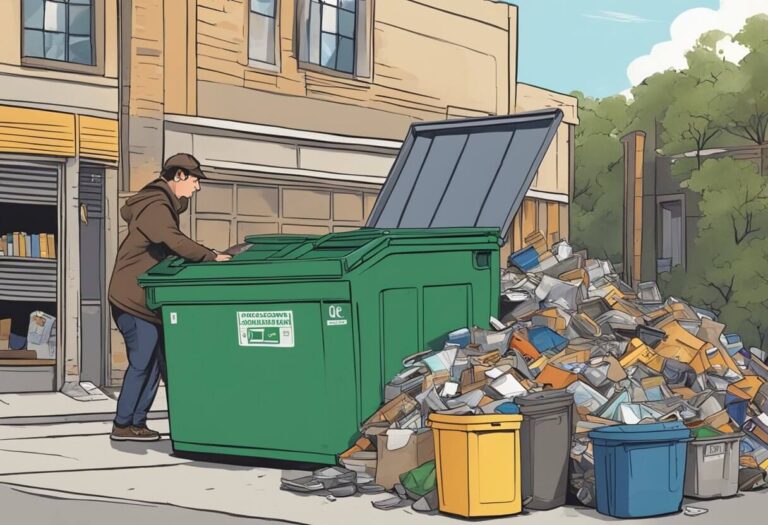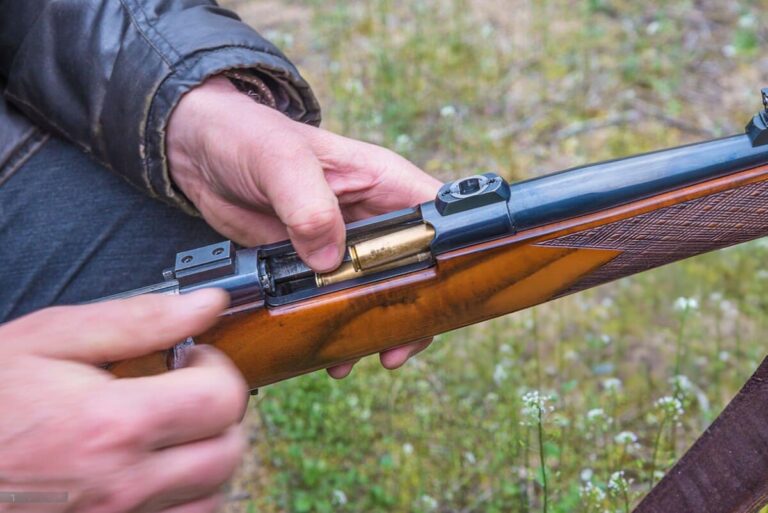Is It Illegal to Hit a Deer and Drive Off? A Legal Guide

The question “Is it illegal to hit a deer and drive off?” may seem straightforward, but the answer is more nuanced than a simple yes or no. Deer-vehicle collisions are a common occurrence, particularly in areas with high deer populations, and it’s crucial to understand the legal and ethical considerations surrounding these incidents.
In this detailed guide, we’ll explore the laws and regulations governing deer-vehicle collisions, insurance implications, ethical responsibilities, and best practices for handling such situations. By the end, you’ll have a clear understanding of what to do if you ever find yourself in this unfortunate scenario.
Legal Requirements Surrounding Deer-Vehicle Collisions
The legality of hitting a deer and driving off depends on a variety of factors, primarily governed by state laws and regulations. Some states have specific laws mandating the reporting of deer-vehicle collisions, while others leave it more open to interpretation.
When Is Reporting a Deer Collision Legally Mandatory?
In many states, you are legally required to report a deer-vehicle collision if:
- There is significant property damage: Most states have a dollar threshold for property damage (e.g., $500 or more) that triggers the need to report the incident.
- Someone is injured: If the collision results in injuries to yourself, your passengers, or anyone else, you must report it to the authorities.
- The deer carcass poses a road hazard: If the deer’s body remains on the road, creating a potential hazard for other drivers, you may be required to report it for removal.
Know your state’s laws. Failure to report a deer collision when required can lead to penalties.
Consequences of Failing to Report a Required Deer Strike
The consequences of not reporting a deer-vehicle collision when required can vary depending on the state and the severity of the incident. Potential penalties may include:
- Fines: Many states impose fines for failure to report a collision, ranging from a few hundred dollars to over a thousand dollars in some cases.
- Misdemeanor charges: In more severe cases, failing to report a deer collision could lead to misdemeanor charges, particularly if the incident resulted in injuries or significant property damage.
- Insurance complications: Not reporting a collision to your insurance company when required by your policy could result in denied claims or even policy cancellation.
To avoid legal and financial repercussions, it’s always advisable to err on the side of caution and report any deer-vehicle collision when in doubt.
Insurance Considerations After Hitting a Deer
In addition to potential legal requirements, your auto insurance policy may also dictate how you should handle a deer-vehicle collision. Most comprehensive auto insurance policies cover animal strikes, but failing to report the incident could jeopardize your coverage.
Maximizing Insurance Coverage for Deer Strike Repairs
If you have comprehensive coverage, your insurance should cover the cost of repairs resulting from a deer-vehicle collision, minus your deductible. However, you’ll typically need to file a claim and provide documentation, such as:
- A police report (if required in your state)
- Photographs of the damage and the accident scene
- Witness statements (if available)
Promptly report the incident to your insurance company. Delaying could make the insurance company suspicious and create complications with the claims process.
Dealing with Insurance Adjusters After a Deer Collision
When you file a claim for a deer-vehicle collision, an insurance adjuster will likely be assigned to assess the damage and determine the appropriate payout. To ensure a smooth process, consider the following tips:
- Be prepared to provide detailed information about the incident, including the date, time, location, and any contributing factors.
- Cooperate fully with the adjuster’s investigation and provide any requested documentation or evidence.
- If you disagree with the adjuster’s assessment, respectfully explain your position and be willing to negotiate.
- Consider hiring a professional appraiser or mechanic to provide an independent estimate of the damage if you believe the adjuster’s assessment is inaccurate.
Insurance companies aim to minimize payouts. Remain vigilant and advocate for fair compensation.
Ethical Responsibilities in Deer-Vehicle Encounters
While legal requirements and insurance considerations are important, it’s also essential to consider the ethical responsibilities involved in deer-vehicle collisions. As responsible drivers, we have a duty to minimize suffering and potential hazards to others.
Should You Help an Injured Deer After a Collision?
Encountering an injured deer can be a distressing situation, and many drivers feel compelled to offer assistance. However, approaching an injured deer can be extremely dangerous, as they may lash out in self-defense, potentially causing severe injuries.
Unless you have specific training and equipment for handling injured wildlife, it’s generally advisable to:
- Contact local animal control or wildlife authorities to report the injured deer.
- Provide a clear description of the deer’s location and condition.
- Warn other drivers by using hazard lights or flares to prevent further collisions.
The instinct to help injured deer is commendable. However, prioritize your safety. Leave handling injured deer to trained professionals.
Best Practices for Safely Removing Deer Carcasses
If a deer is killed in a collision, leaving the carcass on the road can create a significant hazard for other drivers. In such cases, it’s essential to take appropriate measures to ensure the safety of all motorists.
If the deer’s body is blocking traffic or creating a potential hazard, contact local law enforcement or the appropriate authorities to have the carcass removed safely. Attempting to move a large deer carcass on your own can be dangerous and is generally not recommended.
In some states, you may be able to legally claim the deer carcass for personal use (e.g., venison) if you obtain the proper permits or tags. However, it’s crucial to check your local regulations before attempting to do so, as there may be specific requirements or restrictions.
Practical Steps to Take After Hitting a Deer
Regardless of the legal or ethical considerations, there are certain practical steps you should take after a deer-vehicle collision to ensure your safety and proper documentation.
What to Do If There Are No Apparent Damages
Even if there appears to be no visible damage to your vehicle after hitting a deer, it’s still advisable to take the following precautions:
- Pull over to a safe location and turn on your hazard lights.
- Inspect your vehicle thoroughly for any potential damage, including to the undercarriage, tires, and fluid leaks.
- Document the incident by taking photographs and making notes about the location, time, and any other relevant details.
- If required by your state or insurance policy, report the incident to the appropriate authorities or your insurance company.
While the damage may seem minimal, deer collisions can sometimes cause hidden issues that may not be immediately apparent. Taking these precautions can help you avoid potential problems down the road.
Handling Fatal Deer Collisions Responsibly
In the unfortunate event that a deer is killed in a collision, it’s important to handle the situation responsibly and with respect for the animal.
- Pull over to a safe location and turn on your hazard lights.
- Call the appropriate authorities (e.g., local law enforcement, animal control) to report the deceased deer and request its removal from the road.
- If possible, take photographs of the scene and the deer’s location for documentation purposes.
- Avoid approaching or attempting to move the deer carcass yourself, as it can be hazardous and may violate local regulations.
- If you plan to claim the deer carcass for personal use (where legal), follow the proper procedures and obtain any necessary permits or tags.
Remember, even in the case of a fatal deer collision, your safety and the safety of other motorists should be the top priority.
Prevention and Awareness for Avoiding Deer Strikes
While deer-vehicle collisions can sometimes be unavoidable, there are steps you can take to reduce the risk and increase your awareness on the road.
Proven Tips for Safer Driving in Deer Country
When driving in areas with high deer populations, consider the following tips:
- Be extra vigilant during dawn and dusk hours: Deer are most active during these times, increasing the likelihood of encountering them on the road.
- Use your high beams when possible: High beams can help you spot deer sooner, giving you more time to react.
- Scan the roadsides: Deer often travel in groups, so if you see one, slow down and be prepared for others to follow.
- Don’t swerve: If a collision with a deer is imminent, it’s generally safer to brake firmly while staying in your lane rather than swerving, which could cause you to lose control of your vehicle.
- Install deer whistles or deterrents: While their effectiveness is debated, these devices may help
Do Deer Whistles and Other Deterrents Work?
While deer whistles and other deterrent devices are often marketed as effective solutions for avoiding deer-vehicle collisions, their actual efficacy is widely debated. These devices typically emit high-frequency sounds or ultrasonic waves designed to scare deer away from the road.
However, numerous studies have questioned their effectiveness, with some researchers suggesting that deer may simply become habituated to the sounds over time, rendering the deterrents ineffective. Additionally, the range and directionality of these devices may limit their ability to warn deer in all situations.
Nonetheless, some drivers feel more at ease using deer whistles or deterrents, as they provide a sense of proactivity in attempting to avoid collisions. If you choose to use such devices, it’s important to remember that they should not be relied upon as a sole means of prevention. Maintaining vigilance, scanning the roadsides, and adjusting your driving behavior in deer-populated areas remain crucial.
Using deer whistles or deterrents is a personal choice. Have realistic expectations about their effectiveness. Continue practicing safe driving in areas with high deer activity.
Conclusion
In conclusion, hitting a deer and driving off may not always be illegal, but failing to report when required can lead to fines and insurance issues. Ethical responsibilities include minimizing suffering to injured deer and removing road hazards – best left to professionals.
The key is prioritizing safety while following legal and ethical obligations. If you hit a deer, pull over safely, document it, and contact authorities or insurance as needed.
Being vigilant during high deer activity times, using high beams, and scanning roadsides can help prevent collisions. Deer deterrents may provide an extra layer of protection.
Deer collisions happen often, so understanding how to responsibly handle them ensures safety, legal compliance, and minimizes harm.






